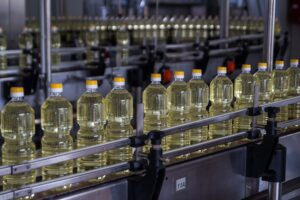
On August 14, 2024, the Embassy of Pakistan in Ukraine hosted a solemn event to celebrate the 77th anniversary of the Independence Day of the Islamic Republic of Pakistan, which was attended by representatives of the Pakistani community from different regions of Ukraine, Islamic religious leaders and friends of Pakistan from among the citizens of Ukraine.
After the reading of the Holy Quran, Ambassador Extraordinary and Plenipotentiary of the Islamic Republic of Pakistan H.E. Major General (retired) Nadir Khan raised the national flag during the performance of the national anthem of Pakistan.
The Ambassador of Pakistan congratulated the guests on a special day in the history of the country, when the unprecedented struggle of the Pakistani people for freedom under the leadership of the Father of the Nation Muhammad Ali Jinnah took place, culminating in the establishment of the state of Pakistan on August 14, 1947.

The diplomat noted that the 77-year history of the country’s independence is full of challenges and trials:
– Incomplete territorial division and unresolved Kashmir issue
– Migration and refugee crisis
– Crisis of governance (death of Muhammad Ali Jinnah and assassination of Liaquat Ali Khan)
– Wars with India (1948, 1965 and 1971)
– Consequences of the Soviet invasion of Afghanistan, which led to the war on terrorism
– Natural disasters, sanctions, etc.
According to the diplomat, today Pakistan is the only Muslim nuclear power with powerful armed forces.

In his speech, the Head of the Diplomatic Mission also focused on the work of the Embassy over the past year of his stay in Ukraine.
“We work in close cooperation and coordination with our Ukrainian friends. The visit of the Minister for Foreign Affairs of Ukraine to Pakistan, the participation of the First Lady of the Islamic Republic of Pakistan in the Forum of First Ladies and Gentlemen, regular communication and exchange of messages between the leaderships of the two countries are just some of the moments that reflect the positive in our relations with Ukraine,” he said.
The Ambassador emphasized his country’s unwavering position in support of Ukraine’s territorial integrity and sovereignty
“We wish and want to see full peace return to Ukraine as soon as possible. Pakistan has been and will always be happy to play a constructive role in resolving the conflict,” the diplomat emphasized.
A message from the President of Pakistan, Mr. Asif Ali Zardari, was also read out.
The ceremony concluded with a prayer for the well-being and prosperity of the people of Pakistan, the Muslim Ummah and humanity, as well as for the return of peace and prosperity to Ukraine.
The Islamic Republic of Pakistan recognized Ukraine’s independence on December 31, 1991. On March 16, 1992, diplomatic relations between Ukraine and Pakistan were established. The Embassy of Pakistan has been operating in Kyiv since October 1997.

On the territory of Kiev introduced restrictions on the movement of large-size trucks on Sunday.
“In order to preserve the road surface, trucks are prohibited to move at air temperatures over +28 degrees Celsius. The ban applies to transport with an actual weight of more than 24 tons and axle loading of more than 7 tons,” – reported in the telegram channel.
Drivers can wait out the hot period on sites for temporary parking in the right-of-way of highways and near road service objects.
The KSCA will inform about the removal of the restriction in the telegram channel.

Ukrainian honey producers have strengthened their positions in the global honey market over the past 10 years and increased export volumes in the period from 2012 to 2023 by more than five times, the press service of the Ukrainian Club of Agrarian Business (UCAB) said.
“In 2024, Ukrainian honey, despite the difficulties of a full-scale war, continues to demonstrate a steady positive dynamics in the world market. For the first three months of this year, honey exports amounted to more than 23 thousand tons, which in money equivalent is $44 million. The greatest demand is constantly observed in the countries of the European Union, in particular in Germany, Poland and France, which account for almost half of foreign currency earnings,” – said analysts.
According to their information, Ukraine has been in the top 5 world exporters of honey for several years. Thus, according to the results of 2023 Ukraine in honey exports takes the fourth place among the traditional world leaders with 55.4 thousand tons. In this rating it is ahead of China with 152.6 thousand tons, India – 98.7 thousand tons, Argentina – 68.9 thousand tons, and on the fifth position is Brazil with 28.5 thousand tons of honey.

Ukrainian banks in January-June this year increased net profit by UAH 11.4 billion, or 16.8% compared to the figure for the same period of 2023 – up to UAH 79.04 billion, the National Bank of Ukraine (NBU) said.
“The main drivers of profitability are maintaining a high net interest margin and almost zero allocations to provisions for losses from active operations,” the NBU explained the reasons for the profitability growth.
“In the first half of the year, only seven small banks out of 62 solvent banks were unprofitable with an aggregate loss of UAH 171 million,” informed the National Bank.
According to his data, the profitability of the main assets of banks during the second quarter further declined. In particular, it was falling fastest for NBU certificates of deposit, in connection with which banks reduced the volume of investments in these securities, the regulator said.
At the same time, rates on domestic government loan bonds (OVGZ) also went down, but the volume of investments in them grew.
“It was due to the increase in assets that banks maintained a sufficiently high net interest margin and increased income,” the regulator emphasized.
It is noted that the return on equity of banks for the first half of 2024 amounted to 48.4%, which is lower than the same indicator of the first half of 2023, which amounted to 56%.
The volume of income tax accrued by banks for the first six months of this year amounted to UAH 21.9 billion compared to UAH 12.4 billion for the comparable period last year, as the income tax rate was increased from 18% to 25%.
According to the NBU, last year the net profit of the banking system amounted to UAH 82.8 bln after accruing UAH 76.2 bln of profit tax at the increased rate of 50%.

Rapeseed oil exports in July-June 2023-2024 marketing year (MY) reached a record high of more than 420,000 tons, Ukroliaprom association said.
“Ukrainian rapeseed oil is confidently entering the markets of China, EU, Malaysia, Singapore and other countries of the world. Positive dynamics is also observed for rapeseed meal,” the industry association said.
According to Ukroliaprom, for the first time in all years in Ukraine processed 1.0 million tons of rapeseed, which amounted to 22.3% of the harvest in 2023, and this despite the fact that rapeseed is considered mainly export-oriented raw materials.
In addition, exports of soybean oil and meal, and their production and processing accordingly, continue to grow, especially in January-June 2024.
“The growth of domestic processing of seeds and soybeans, as well as a significant increase in exports of high value-added products, namely oil and meal, confirms the association’s position on the need to create conditions for maximum processing of oilseeds at domestic facilities. Further development of the oil and fat industry of Ukraine is expected not so much in increasing the processing of sunflower seeds, but in such oilseeds as soybean and rapeseed, which are still considered as export-oriented. In this matter we hope for the support of the Ministry of Agrarian Policy and Ministry of Economy of Ukraine”, – emphasized the industry association.
Ukroliaprom stated that sunflower oil exports in January-June 2024 doubled compared to the same period in 2022 and 1.3 times in 2023. In the ten months of 2023-2024 MY, sunflower oil exports increased 1.2 times compared to the same period of 2022-2023 MY.

Ukraine in January-July this year increased imports of coke and semi-coke in physical terms three times compared to the same period last year – up to 343.678 thousand tons.
According to statistics released by the State Customs Service (SCS) on Friday, imports of coke in monetary terms for this period increased 2.25 times to $124.520 million.
Imports were mainly from Poland (87.67% of shipments in monetary terms), Hungary (4.25%) and China (3.08%).
In the first seven months of the year, the country exported 1.025 thousand tons of coke worth $231 thousand to Moldova (99.57%) and Latvia (0.43%), while there were no exports in January and March 2024.
As reported, Ukraine in 2023 reduced imports of coke and semi-coke in physical terms by 8.5% compared to 2022 – to 328.697 thousand tons, imports in monetary terms decreased by 25.8% – to $129.472 million.
Ukraine exported 3.383 thousand tons of coke in 2023, down 12.3% from 2022. In monetary terms, it decreased by 22.2% – to $787 thousand. Exports were made to Moldova (100% of shipments in monetary terms), while imports were mainly from Poland (88.47%), Colombia (7.72%) and the Czech Republic (3.15%).